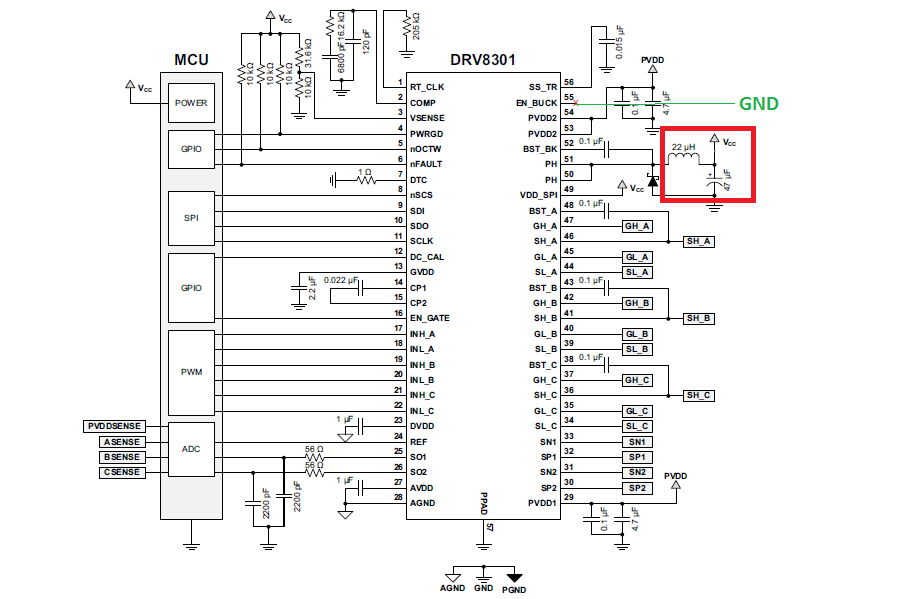Hi all,
I have been working on DRV8301 for more than 2 weeks now but I'm coming across a problem every time I try anything with the reference design given in figure 7 in datasheet. I have connected everything as suggested in the design and then IC heats up a lot and quickly.
Temperature reaches 100 C very fast and nothing works and GVDD is low in that case. But as soon as I disable EN_BUCK by driving it LOW then GVDD = 11V and IC cools down and SPI works fine.
When EN_BUCK is kept floating it reaches 2.4V. I have checked all other voltages when BUCK is disabled like AVDD = 6.4V, DVDD = 3.3V.
While driving EN_BUCK LOW I also remove 22uH inductor and 47uF capacitor from the design.


